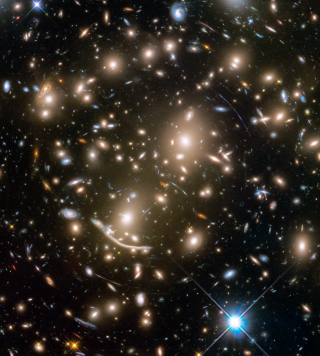Bibcode
Mancera Piña, Pavel E.; Peletier, Reynier F.; Aguerri, J. A. L.; Venhola, Aku; Trager, Scott; Choque Challapa, Nelvy
Referencia bibliográfica
Monthly Notices of the Royal Astronomical Society, Volume 481, Issue 4, p.4381-4388
Fecha de publicación:
12
2018
Número de citas
45
Número de citas referidas
43
Descripción
The number of ultra-diffuse galaxies (UDGs) in clusters is of
significant importance to constrain models of their formation and
evolution. Furthermore, their distribution inside clusters may tell us
something about their interactions with their environments. In this
work, we revisit the abundance of UDGs in a more consistent way than in
previous studies. We add new data of UDGs in eight clusters from the
Kapteyn IAC WEAVE INT Clusters Survey (KIWICS), covering a mass range in
which only a few clusters have been studied before, and complement these
with a compilation of works in the literature to homogeneously study the
relation between the number of UDGs and the mass of their host cluster.
Overall, we find that the slope of the number of UDGs-cluster mass
relation is consistent with being sublinear when considering galaxy
groups or linear if they are excluded, but we argue that most likely the
behaviour is sublinear. When systematically studying the relation
between the projected distance to the innermost UDG and M200
for each cluster, we find hints that favour a picture in which massive
clusters destroy UDGs in their centres.
Proyectos relacionados

Evolución de Galaxias en Cúmulos
Las estructuras en el Universo, a todas las escalas de masa, se han formado de una forma jerárquica y principalmente producidas por fusiones de galaxias. Sin embargo, esta formación jerárquica de las galaxias está modulada por el entorno en el cual se crean y evolucionan. Mientras que las galaxias de campo presentan una evolución pasiva, los
Jairo
Méndez Abreu